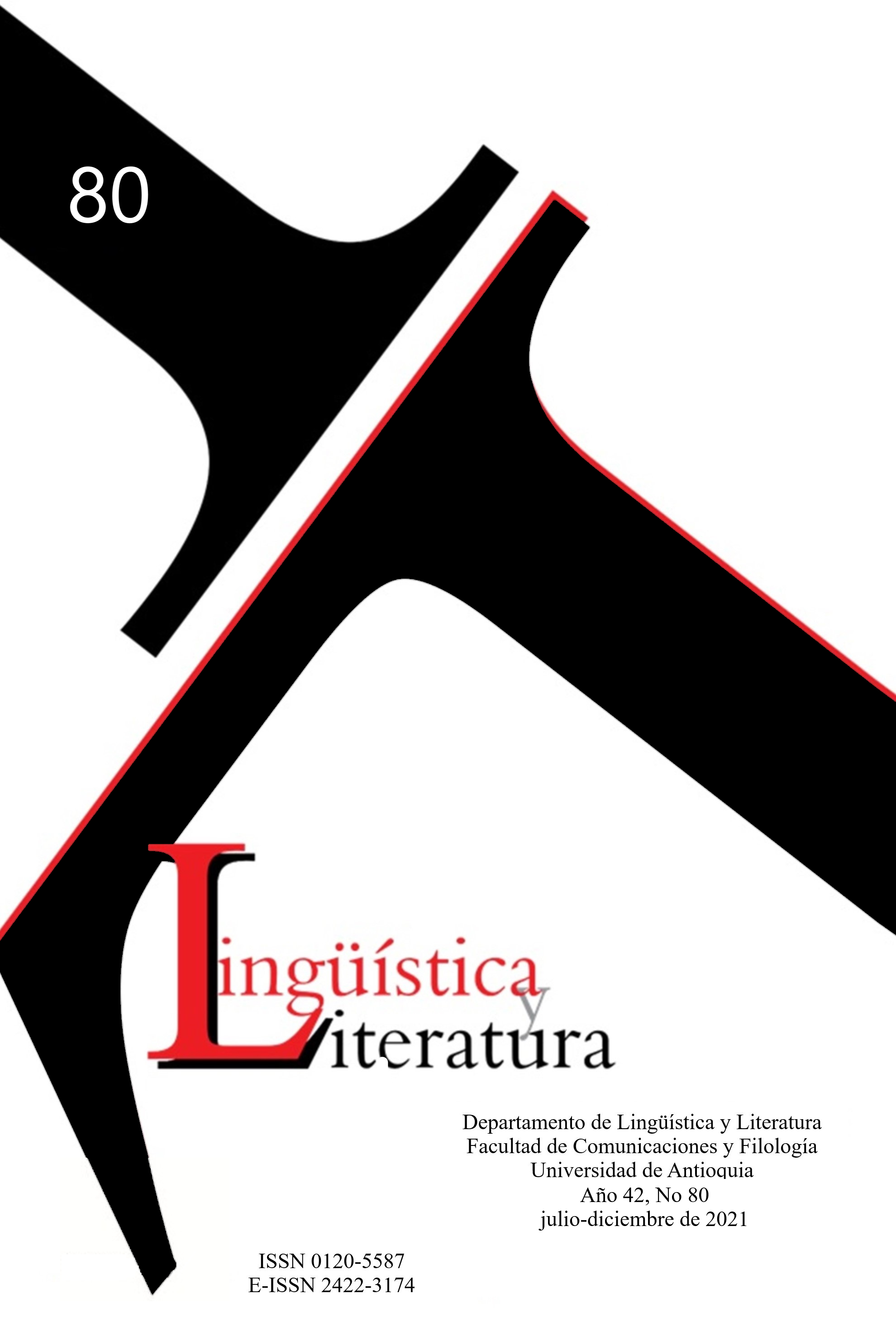El peso de la identidad nacional: lengua, nación y tradición de los escritores translingües
DOI:
https://doi.org/10.17533/udea.lyl.n80a05Palabras clave:
nacionalidad, translingüísmo, identidad, lengua, literatureResumen
En un tiempo en que la globalización pone en cuestión las categorías nacionales de la tradición literaria, la decisión de ciertos escritores de cambiar de lengua para escribir cobra especial importancia. Este trabajo estudia los casos de Ngũgĩ wa Thiong’o (1938), keniano que abandona el inglés para escribir en gîkûyû; Juan Rodolfo Wilcock (1919-1978), argentino que renuncia al español y escribe en italiano; y Joseph Conrad (1857-1924), polaco que escribe en inglés sobre África; interroga las transacciones del pasaje a una lengua otra y analiza la constitución de sus obras en «zonas de contacto» entre culturas.
Descargas
Citas
Aguirre, O. (2011). Iluminaciones de un hombre sombrío. Las vueltas del camino.http://lasvueltasdelcamino.blogspot.com/2011/04/iluminaciones-de-un-hombresombrio.html
Alemany Bay, C. (2000). Juan Rodolfo Wilcock: historia (no sólo poética) de un argentino italianizado. Arrabal, 2(3), 111-120.
Anderson, B. (2007). Comunidades imaginadas. Reflexiones sobre el origen y la difusión del nacionalismo. México: Fondo de Cultura Económica.4. Balderston, D. (1986). La literatura antiperonista de J. R.Wilcock. Revista Iberoamericana, lii (135-136), 573-581.
Barth, J. (1976). Literatura del agotamiento. En Alazraki, J. (Ed.), Jorge Luis Borges: el escritor y la crítica (pp. 170-182). Madrid: Taurus.
Benjamin, W. (1971). Angelus Novus. Barcelona: Edhasa.
Bianchiotti, H. (1998). La felicidad del poeta. Diario La Nación, s.p.https://www.lanacion.com.ar/cultura/lafelicidad-del-poeta-nid209270
Borges, J. L. (1998). El escritor argentino y la tradición. En Discusión. (pp. 188-203). Madrid: Alianza Editorial.
Borges, J. L. (1976). El idioma analítico de John Wilkins. En Otras inquisiciones. (pp. 154-161). Madrid: Alianza Editorial.
Casanova, P. (1999). La republique mondiale des lettres. Paris : Editions du Seuil.
Cohen, M. (2006). Pequeñas batallas por la propiedad de la lengua. En S. Molloy & M. Siskind (Eds.), Poéticas de la distancia (pp. 35-56). Buenos Aires: Editorial Norma.
Conrad, J. (2010) Heart of Darkness. Cambridge : Cambridge University Press.
Conrad, J. (1903). Falk, Amy Foster, Tomorrow: Three Stories. New York: McClure, Phillips and Company.
Deidier, R. (2002). Segnali sul nulla: studi e testimonianze per Juan Rodolfo Wilcock. Roma: Istituto della Enciclopedia italiana.
Deleuze, G. & Guattari, F. (1986). Kafka. Toward a Minor Literature. Minneapolis/London: University of Minnesota Press.
Fuentes, C. (2004). Discurso pronunciado en el iii Congreso Internacional de la Lengua Española, Rosario. http://congresosdelalengua.es/rosario/inauguracion/fuentes_c.htm.
Gillon, A. (1966). Some Polish Literary Motifs in the Works of Joseph Conrad. The Slavic and East European Journal, 10(4), 424-439.
González, C. (2013). Contra la comunidad. Estéticas de la repulsión y políticas del caos en Juan Rodolfo Wilcock. Buenos Aires: Biblos.
Grutman, R. (2009). Self-translation. En Routledge Encyclopedia of Translation Studies. (pp. 257-260). New York: Routledge.
Publicado
Cómo citar
Número
Sección
Licencia
Derechos de autor 2021 Lingüística y Literatura

Esta obra está bajo una licencia internacional Creative Commons Atribución-NoComercial-CompartirIgual 4.0.
Creative Commons by-nc-sa
Aquellos autores/as que tengan publicaciones con esta revista, aceptan los términos siguientes:
1. La revista es el titular de los derechos de autor de los artículos, los cuales estarán simultáneamente sujetos a la Licencia Internacional Creative Commons Reconocimiento-NoComercial-CompartirIgual 4.0. que permite a terceros compartir la obra siempre que se indique su autor y su primera publicación en esta revista.
2. Los autores/as podrán adoptar otros acuerdos de licencia no exclusiva de distribución de la versión de la obra publicada (p. ej.: depositarla en un archivo telemático institucional o publicarla en un volumen monográfico) siempre que se indique la publicación inicial en esta revista.
3. Se permite y recomienda a los autores/as difundir su obra a través de Internet (p. ej.: en archivos telemáticos institucionales o en su página web) antes y durante el proceso de envío, lo cual puede producir intercambios interesantes y aumentar las citas de la obra publicada.










